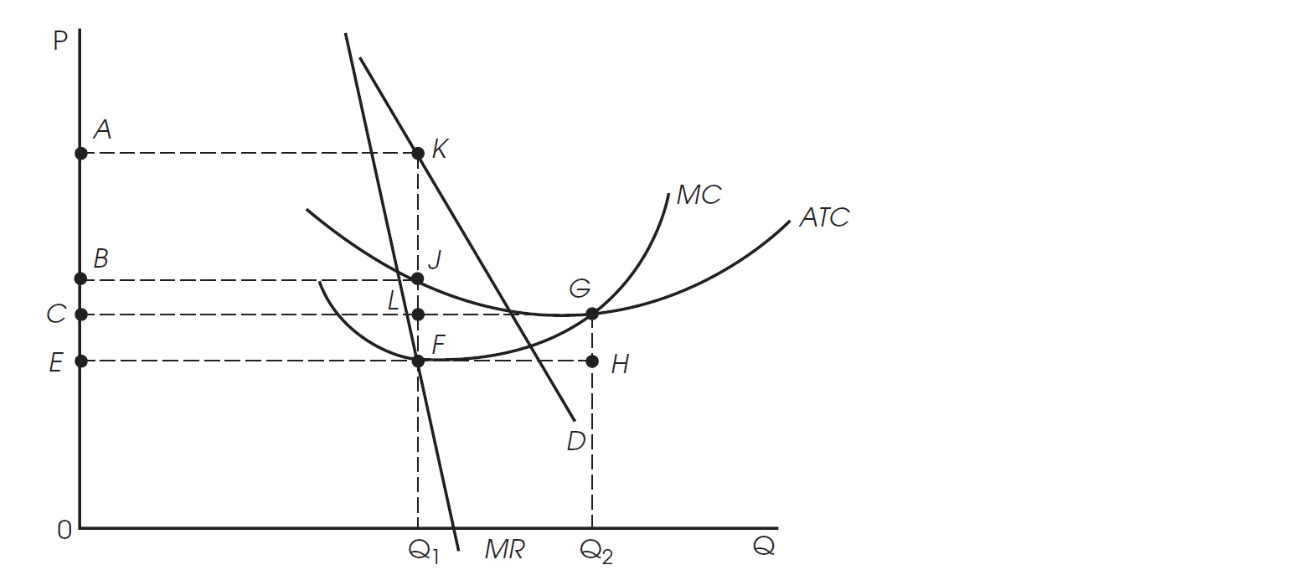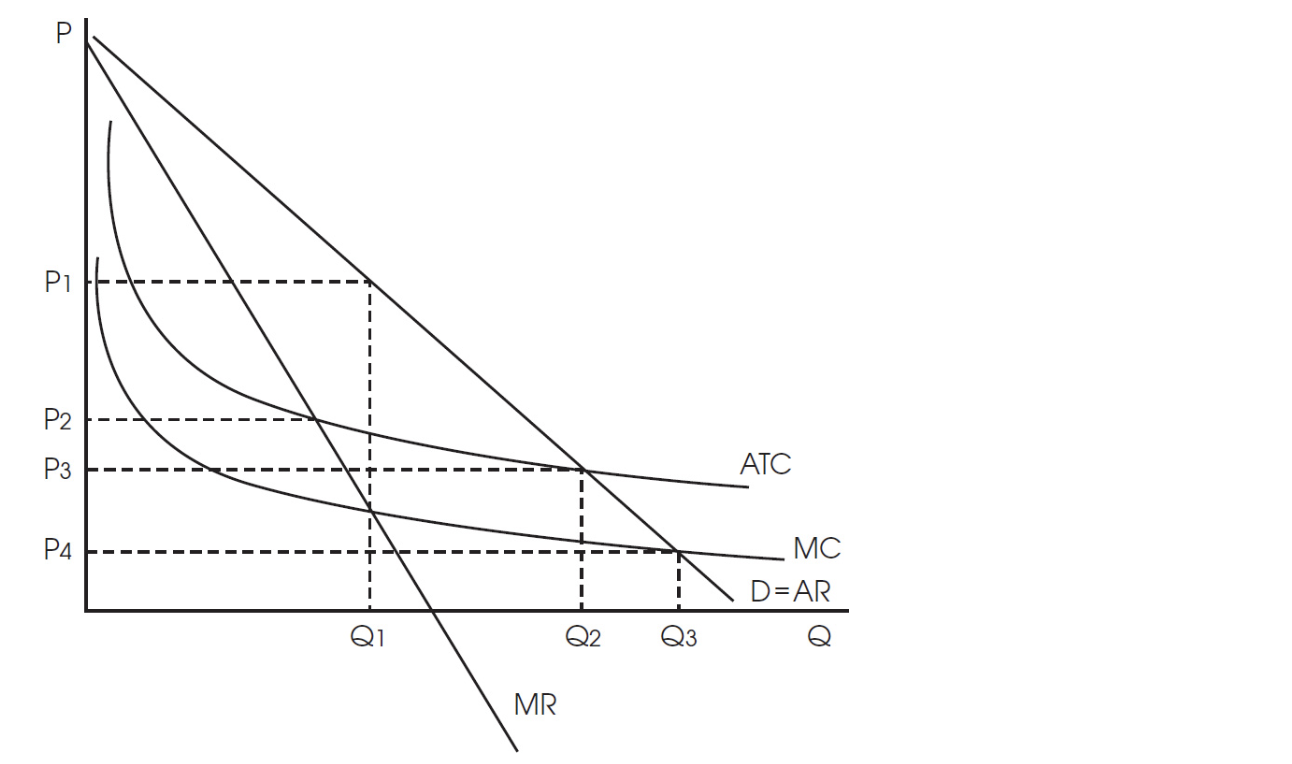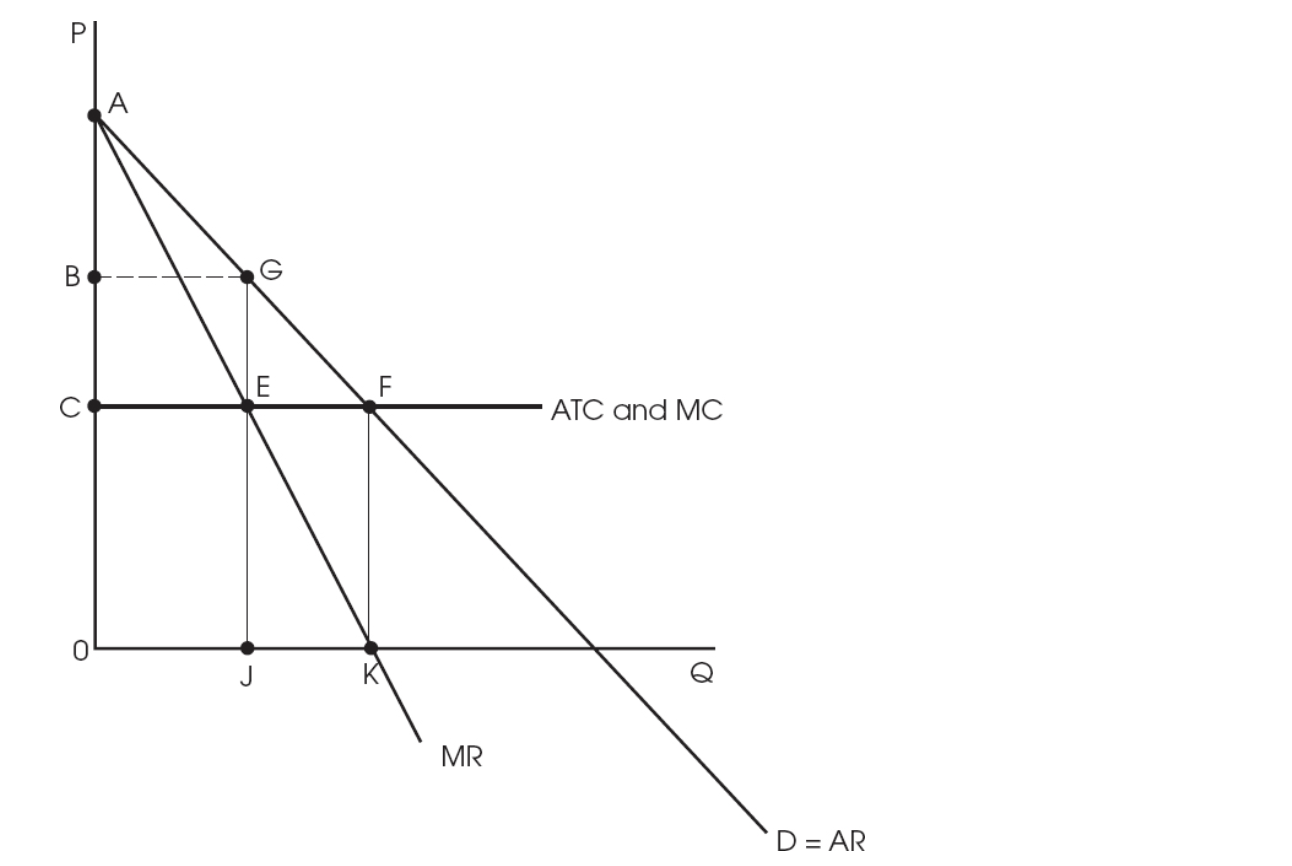AP Microeconomics/Macroeconomics Premium, 2024-Monopoly
Multiple-Choice Review Questions
Use the figure below to answer questions 1 and 2.

1. The total profits for this monopolist are identified by
(A) CEFL.
(B) ABJK.
(C) BCLF.
(D) CEHG.
(E) BEFJ.
2. The total costs for the monopolist are identified by
(A) CEFL.
(B) CEHG.
(C) ABJK.
(D) E0Q1F.
(E) B0Q1J.
Use the figure below to answer questions 3, 4, and 5.

3. The socially optimal price would be
(A) P1.
(B) P2.
(C) P3.
(D) P4.
(E) none of the above.
5. The “fair-return” price of the regulated monopolist would be
(A) P1.
(B) P2.
(C) P3.
(D) P4.
(E) none of the above.
Use the figure below to answer questions 6 and 7.

6. If this is a perfectly competitive market, the consumer surplus would be area
(A) ABG.
(B) ACF.
(C) BCEF.
(D) COKF.
(E) GEF.
7. After the unregulated, profit-maximizing monopolist takes over, the consumer surplus is
(A) ABG.
(B) ACF.
(C) BCEG.
(D) COKF.
(E) GEF.
8. If a monopoly increases production in the elastic region of the demand curve, which of the following is true?
(A) Marginal revenue and total revenue are negative.
(B) Marginal revenue is negative, and total revenue is increasing.
(C) Marginal revenue is negative, and total revenue is decreasing.
(D) Marginal revenue is positive, and total revenue is decreasing.
(E) Marginal revenue is positive, and total revenue is increasing.
9. Which of the following are true about profit-maximizing monopolies?
I. They produce on the inelastic portion of their demand curves.
II. Marginal revenue is less than demand.
III. They are “price takers.”
IV. Price is greater than minimum ATC.
(A) I and II only
(B) I, II, and III only
(C) II and IV only
(D) I and III only
(E) I, III, and IV only
10. Which of the following is true of a natural monopoly?
(A) As output increases, the long-run average total cost curve decreases.
(B) As output increases, the long-run average total cost curve increases.
(C) As output increases, the long-run average total cost curve remains constant.
(D) The fair-return price is where an unregulated natural monopoly will produce.
(E) The socially optimal price is greater than the marginal cost.
Free-Response Review Questions
1. Draw a correctly labeled graph of an unregulated monopoly earning economic profits, and identify each of the following on your graph.
(a) The profit-maximizing quantity and price, labeled QM and PM
(b) The area of economic profit, shaded in
(c) The deadweight loss, also shaded in
(d) The allocatively efficient quantity, labeled QC
2. Grant’s Gas Guzzlers is a used car lot operating as a geographic monopoly due to its remote location without any competition. Grant’s Gas Guzzlers continues to produce despite having economic losses.
(a) Why might Grant’s Gas Guzzlers remain open despite the economic loss?
(b) Now assume Grant’s Gas Guzzlers is earning economic profits.
(i) At the profit-maximizing price, at what segment of the demand curve is the firm operating at: the inelastic, unit elastic, or elastic range?
(ii) If Grant’s Gas Guzzlers increases its prices, what will happen to total revenue?
(c) Now assume Grant’s Gas Guzzlers’ fixed costs increase. What will happen to its profit-maximizing quantity? Explain.




